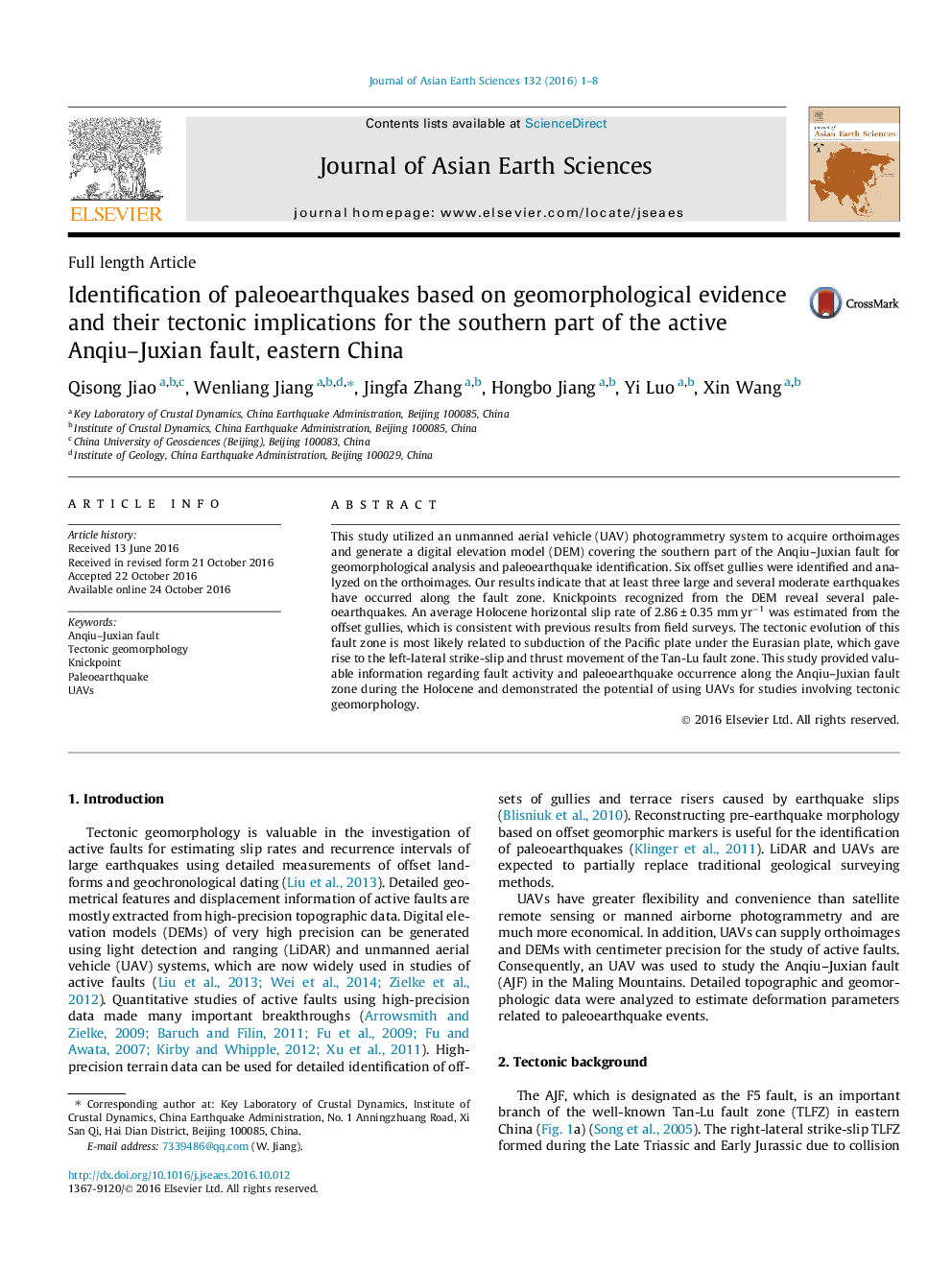| Article ID | Journal | Published Year | Pages | File Type |
|---|---|---|---|---|
| 4729926 | Journal of Asian Earth Sciences | 2016 | 8 Pages |
•Unmanned aerial vehicle was used to acquire orthoimages and DEMs for paleoearthquake study.•Knickpoints recognized from the DEMs revealed several paleoearthquakes along the Anqiu–Juxian active fault zone.•An average Holocene horizontal slip rate was estimated.
This study utilized an unmanned aerial vehicle (UAV) photogrammetry system to acquire orthoimages and generate a digital elevation model (DEM) covering the southern part of the Anqiu–Juxian fault for geomorphological analysis and paleoearthquake identification. Six offset gullies were identified and analyzed on the orthoimages. Our results indicate that at least three large and several moderate earthquakes have occurred along the fault zone. Knickpoints recognized from the DEM reveal several paleoearthquakes. An average Holocene horizontal slip rate of 2.86 ± 0.35 mm yr−1 was estimated from the offset gullies, which is consistent with previous results from field surveys. The tectonic evolution of this fault zone is most likely related to subduction of the Pacific plate under the Eurasian plate, which gave rise to the left-lateral strike-slip and thrust movement of the Tan-Lu fault zone. This study provided valuable information regarding fault activity and paleoearthquake occurrence along the Anqiu–Juxian fault zone during the Holocene and demonstrated the potential of using UAVs for studies involving tectonic geomorphology.
Graphical abstractFigure optionsDownload full-size imageDownload as PowerPoint slide
